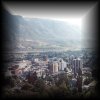
Tournament Capital of British Columbia
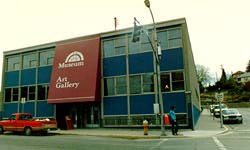 The city in the southern interior of British Columbia, Canada at the junction of the North Thompson and South Thompson rivers. Kamloops is a transportation and commercial hub that has a mixed and expanding economy. Forestry, mining, ranching, and crop farming are the principal industries, and ginseng is
The city in the southern interior of British Columbia, Canada at the junction of the North Thompson and South Thompson rivers. Kamloops is a transportation and commercial hub that has a mixed and expanding economy. Forestry, mining, ranching, and crop farming are the principal industries, and ginseng is 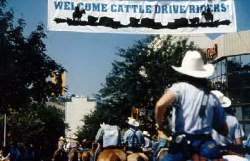 becoming an increasingly valuable crop. Manufactures include cement, wood products, pressed metal, food, and electrical equipment. The city is served by Kamloops Airport
becoming an increasingly valuable crop. Manufactures include cement, wood products, pressed metal, food, and electrical equipment. The city is served by Kamloops Airport 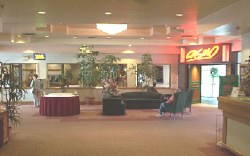 and is home to the University College of the Cariboo. The Kamloops Blazers, of the Western Hockey League, play in the Riverside Coliseum. The city is a growing tourist
and is home to the University College of the Cariboo. The Kamloops Blazers, of the Western Hockey League, play in the Riverside Coliseum. The city is a growing tourist 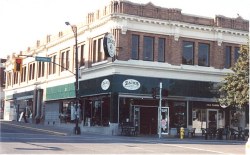 destination; of interest to visitors are the Kamloops Museum and Archives, the Kamloops Symphony Orchestra, the Secwepemc Museum and Native Heritage Park, and the
destination; of interest to visitors are the Kamloops Museum and Archives, the Kamloops Symphony Orchestra, the Secwepemc Museum and Native Heritage Park, and the 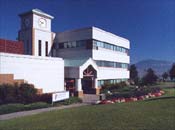 Kamloops Wildlife Park. The Sun Peaks Resort ski area is at nearby Tod Mountain. Annual events include the Kamloops Cowboy Festival in early spring, the Kamloops Folkfest in July, and the Kamloopa Powwow in August.
Kamloops Wildlife Park. The Sun Peaks Resort ski area is at nearby Tod Mountain. Annual events include the Kamloops Cowboy Festival in early spring, the Kamloops Folkfest in July, and the Kamloopa Powwow in August.
The Shuswap (part of the interior Salish) were the first people to live in what is now Kamloops, and the 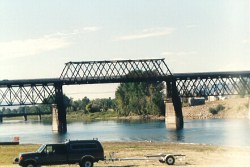 city's name is derived from a Shuswap term for “meeting of the waters.” Europeans established a trading post at the site in 1812. The site grew due to the gold rush of the mid-1860s and the arrival of the Canadian Pacific Railway in 1885.
city's name is derived from a Shuswap term for “meeting of the waters.” Europeans established a trading post at the site in 1812. The site grew due to the gold rush of the mid-1860s and the arrival of the Canadian Pacific Railway in 1885.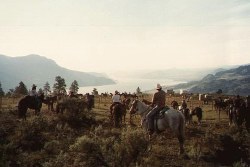 Kamloops incorporated as a city in 1893. It merged with North Kamloops in 1967 and with the outlying areas in 1973. In the mid-1980s highway construction around Kamloops greatly improved access to the city, and the city began to grow. In 1997 Kamloops inaugurated KAMPLAN 1997, a strategy for managing its growth.
Kamloops incorporated as a city in 1893. It merged with North Kamloops in 1967 and with the outlying areas in 1973. In the mid-1980s highway construction around Kamloops greatly improved access to the city, and the city began to grow. In 1997 Kamloops inaugurated KAMPLAN 1997, a strategy for managing its growth.
 city's name is derived from a Shuswap term for “meeting of the waters.” Europeans established a trading post at the site in 1812. The site grew due to the gold rush of the mid-1860s and the arrival of the Canadian Pacific Railway in 1885.
city's name is derived from a Shuswap term for “meeting of the waters.” Europeans established a trading post at the site in 1812. The site grew due to the gold rush of the mid-1860s and the arrival of the Canadian Pacific Railway in 1885. Kamloops incorporated as a city in 1893. It merged with North Kamloops in 1967 and with the outlying areas in 1973. In the mid-1980s highway construction around Kamloops greatly improved access to the city, and the city began to grow. In 1997 Kamloops inaugurated KAMPLAN 1997, a strategy for managing its growth.
Kamloops incorporated as a city in 1893. It merged with North Kamloops in 1967 and with the outlying areas in 1973. In the mid-1980s highway construction around Kamloops greatly improved access to the city, and the city began to grow. In 1997 Kamloops inaugurated KAMPLAN 1997, a strategy for managing its growth. Kamloops covers a land area of 296.1 sq km (114.3 sq mi). Population 67,057 (1991); 76,394 (1996).
NEXT
